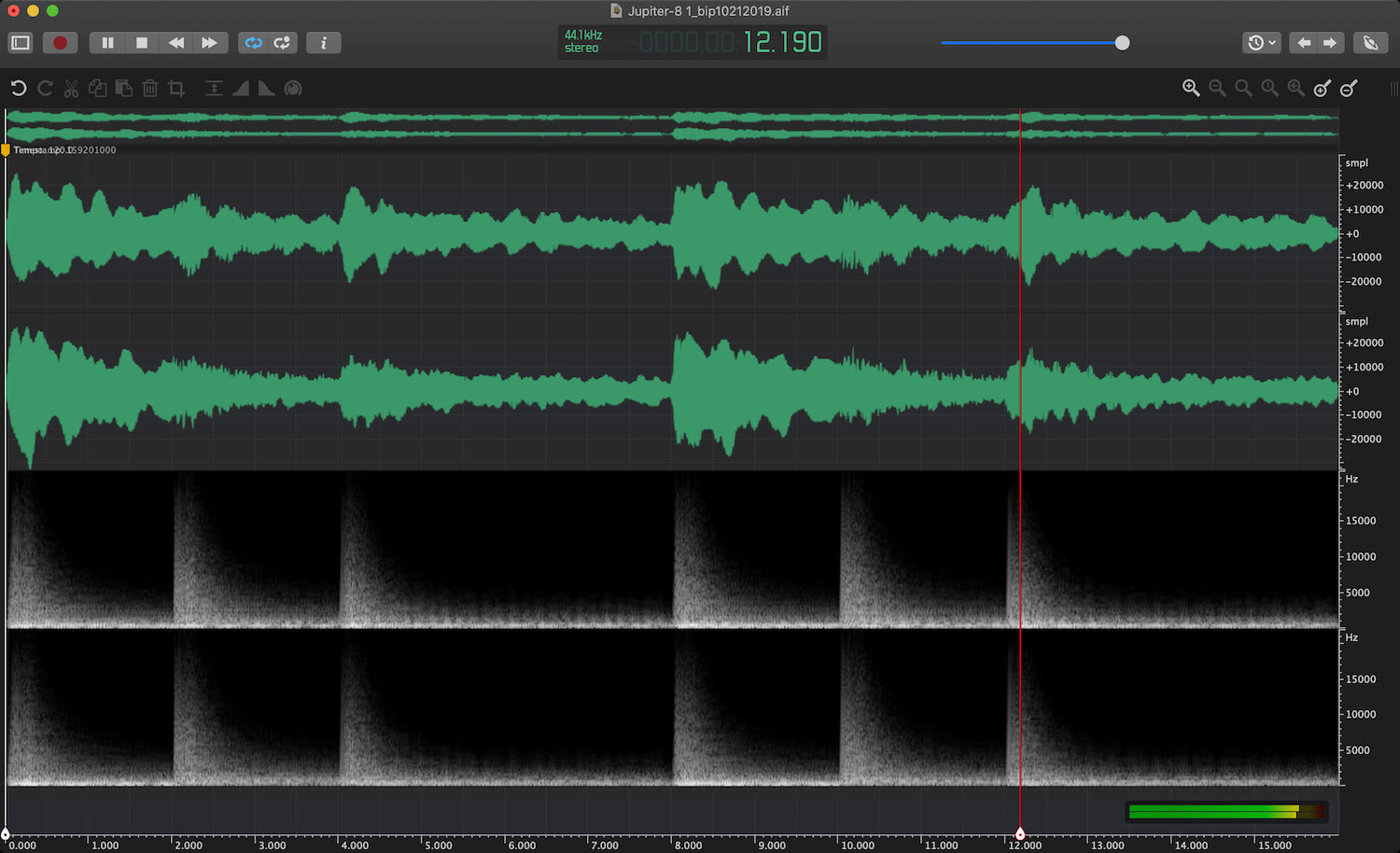 Ocenaudio editor with waveform and spectral view
Ocenaudio editor with waveform and spectral view
Ocenaudio is the fast, easy to use, cross-platform audio editor developed at the Federal University of Santa Catarina in Brazil.
The interface is straightforward to use yet the app is packed with features that are there when you need them. There is even an audio screenshot feature that lets you set the image resolution and select which aspects you want to display. It handles large files gracefully and navigation within a file is a breeze.
I got in touch with the team currently working on Ocenaudio in Brazil to learn about the story behind this app.
Can you tell us about how the Ocenaudio project began?
Ocenaudio began out of necessity when a speech processing research group started using Apple computers to replace Windows PCs. CoolEdit was the audio editor we used, running on Windows at the time. In the early 2000s, we had no substitute for CoolEdit on MacOS. With the adoption of Macs, software engineers in this group decided to create a small application for the audio manipulations required in their research. Over time, features were added until version 2.0 of the software was released in 2011. The application has been continuously improved since that first release. This initiative occurs in the free time of the researchers involved as a hobby and remains so until the present day.
Is the same team working on Ocenaudio now?
Some researchers have made important contributions to the software, but the continuity of Ocenaudio currently depends on the efforts of the two engineers who are still working on research in this group.
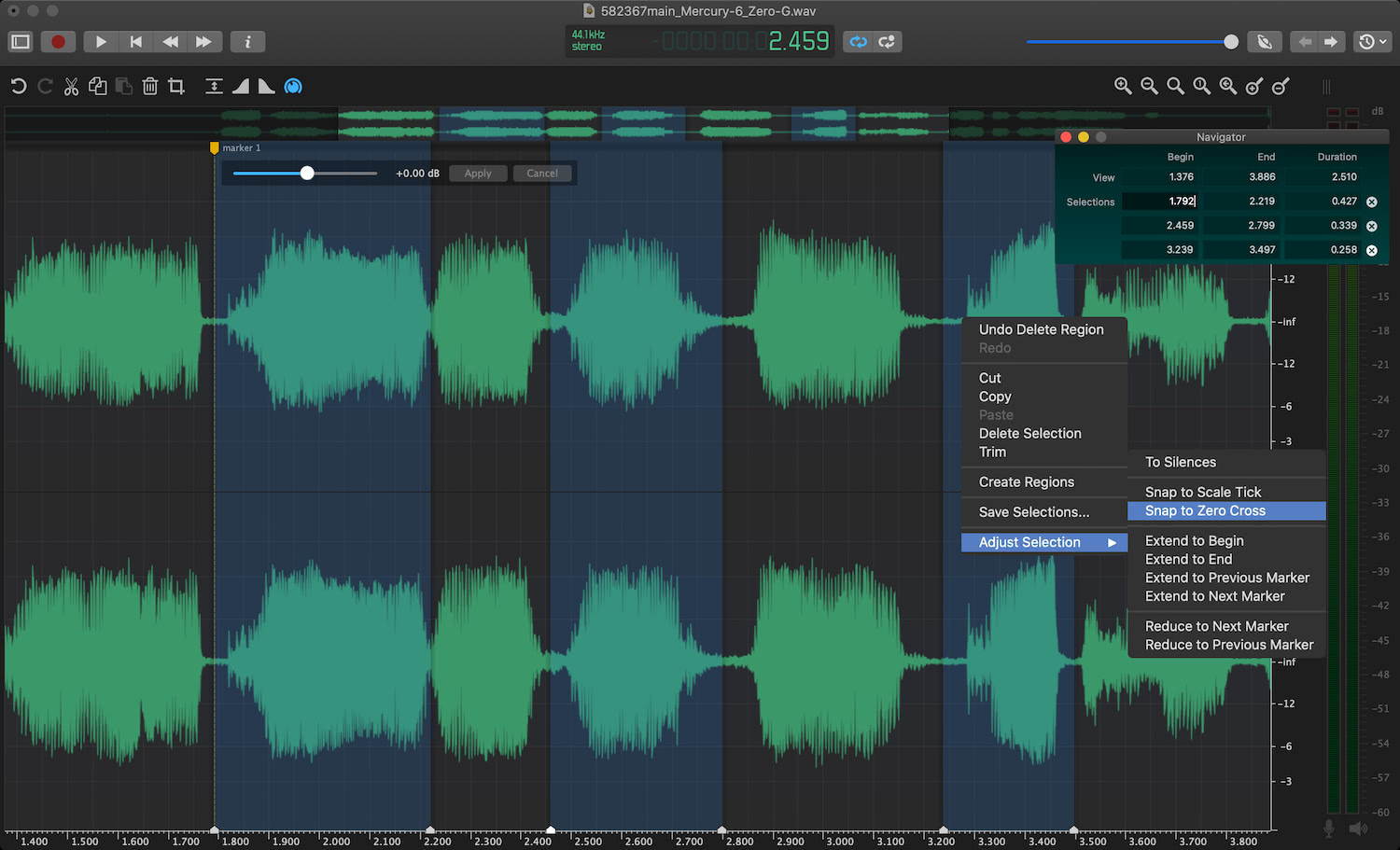 Listen and edit multiple sections of a file with multi-selection
Listen and edit multiple sections of a file with multi-selection
When did the project start?
The project started in the early 2000s. In its first version, Ocenaudio was not made publicly available. The second version, with the current team, took advantage of some small pieces of code, the name, and icon of the first version, and was completely rewritten in early 2009.
How does development continue since the app is free?
Since the publication of the first public version, there has been great acknowledgment from users, which motivates us to continue development. Other than that, we always consider the possibility of creating a professional version of Ocenaudio as a career option, however, postponed while we still work with other researches that finance us, leaving Ocenaudio as a hobby for our free time.
Interface Evolution
These are a few screenshots provided by the team showing how the interface has subtly evolved over the last 10 years.
 User Interface Evolution 2011, 2013 and 2015
User Interface Evolution 2011, 2013 and 2015
 User Interface Evolution 2016, 2019 and 2020
User Interface Evolution 2016, 2019 and 2020
Was there a visual or UX designer involved?
As software engineers, Ocenaudio is still a learning tool to improve our ability to create applications with a good user experience. The feedback we receive from our users is valuable inputs for us to improve the user experience as well as our skills as software developers.
The cursor movement, zoom, playback controls, and key commands are fast and intuitive to use. How were those features designed?
A specific design study was not prepared for these functionalities, but according to the use of Ocenaudio and the evolution of the operating systems (mainly MacOS), we tried to follow and improve to make the experience more seamless with the evolution of the graphical interface of operating systems.
What language was used to build Ocenaudio?
C/C++
Where did the name Ocen come from?
This is a long history. But in short, the name OCEN comes from reversing the nickname of the first developer: Neco.
Is there a story behind the app icon?
The icon was created in the first version and its oval shape represents the initial letter of Ocenaudio. But as explained earlier, the icon and name are inherited from the first (internal) version of the software.
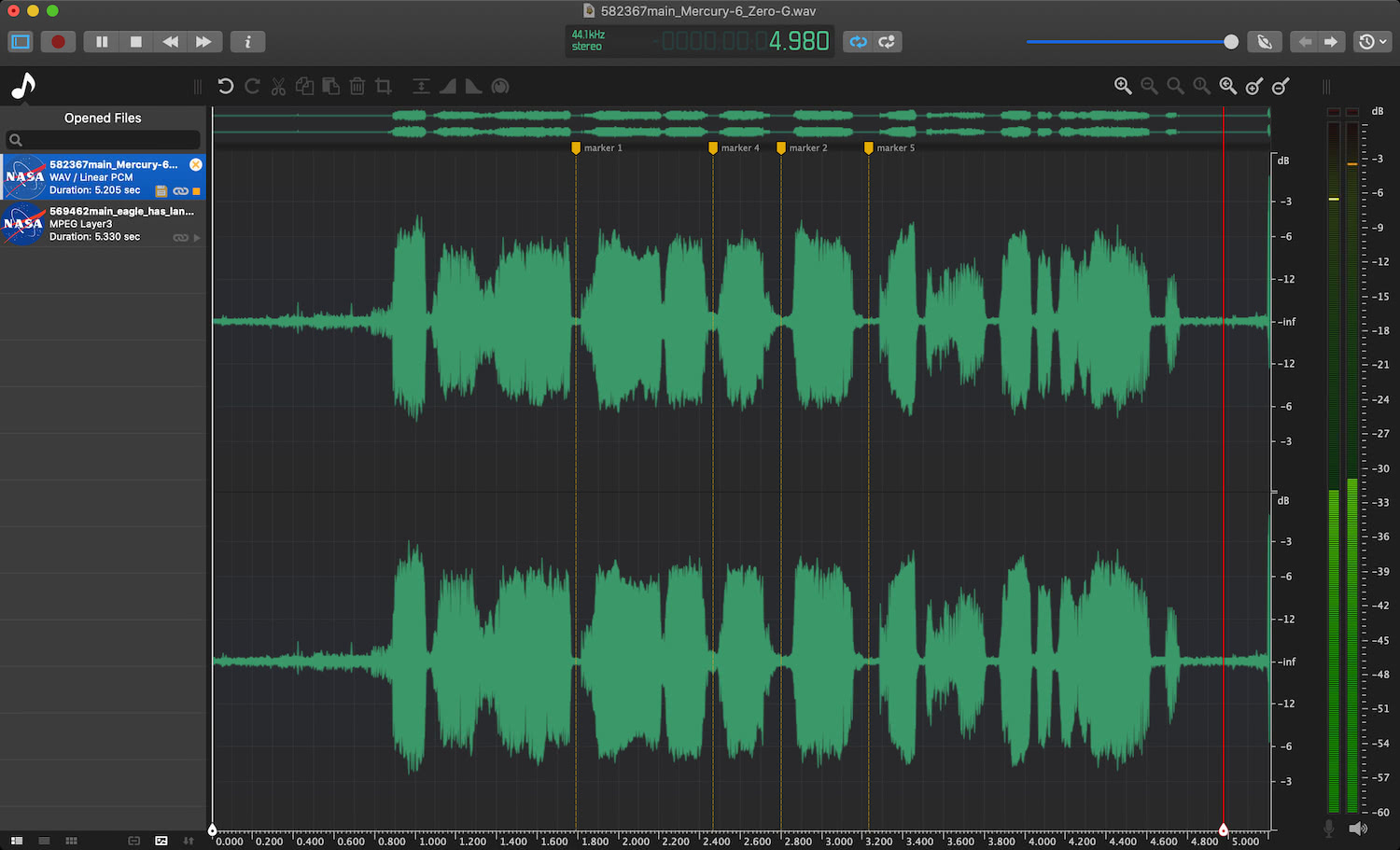 Editor showing markers which are very useful for editing
Editor showing markers which are very useful for editing
What is the Ocen Framework?
In the Ocenaudio code rewriting process, the code was divided into libraries so that it was possible to create an ecosystem that would facilitate the creation of software for editing, reproducing, and manipulating audio. This ecosystem (set of libraries) has been given the name Ocen Framework. At the beginning of the project there were plans to make this framework available, however, due to the reduction in the number of people willing to contribute to the project these plans were postponed and there are currently no plans on when it will be possible to allocate our free time to create the necessary documentation for using the APIs, as well as the necessary code adjustments for the availability of this framework. In addition, another important factor is our options regarding the business future of Ocenaudio and Ocen Framework.
Are there any future plans you can share for Ocenaudio and related projects?
As the development of Ocenaudio depends heavily on the developers’ availability of time, we always end up limited by our research activities. Thus, we were unable to establish a temporal roadmap on when new features can be added. What we can guarantee today is that the version with the current set of features will be kept free of charge, accepting donations from users that help us to maintain operating, hosting, domains, and other costs involved.
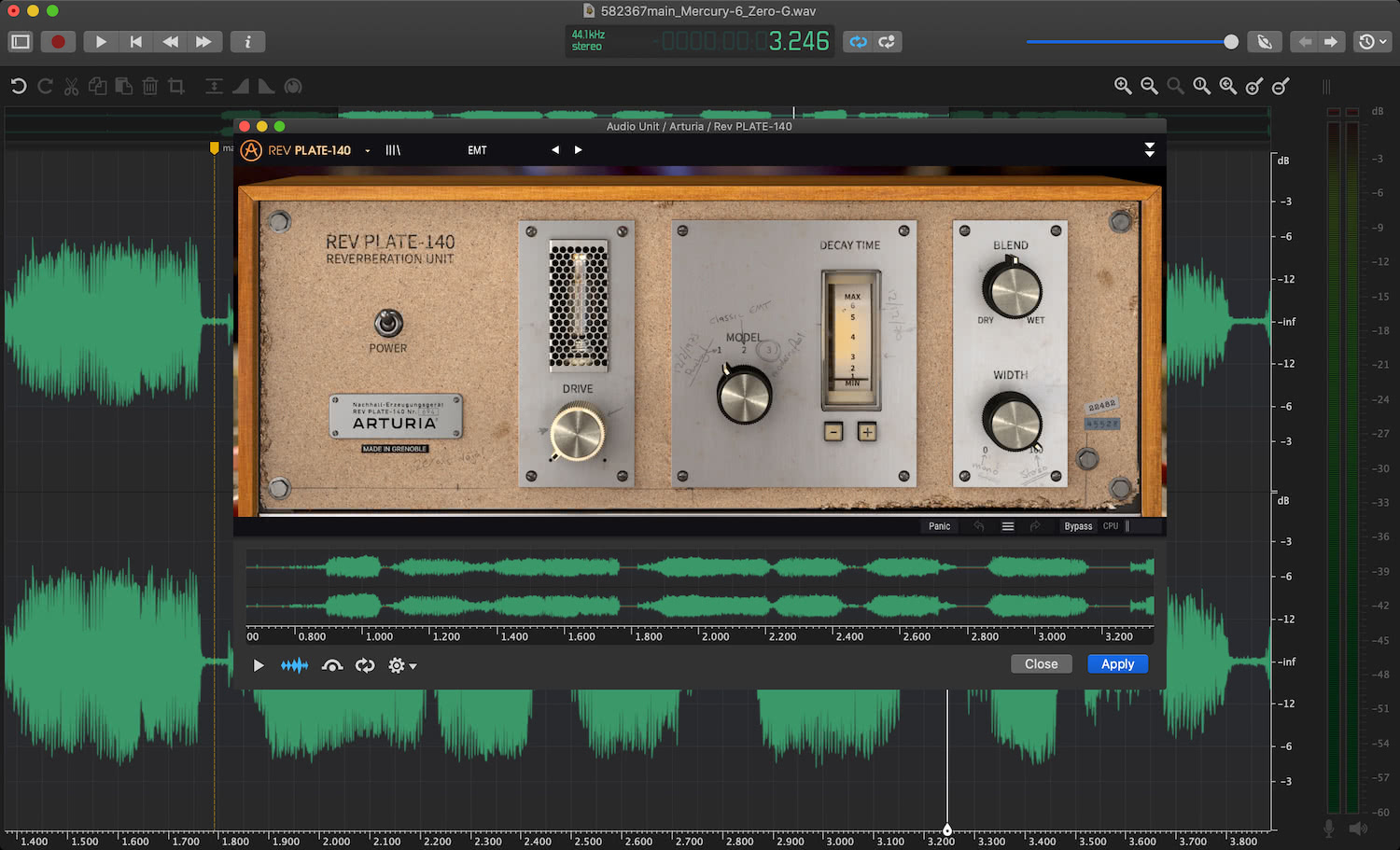 Use your favorite Audio Unit and VST plugins in Ocenaudio
Use your favorite Audio Unit and VST plugins in Ocenaudio
Can you share some examples of who is using Ocenaudio, or surprising ways you have seen it used?
Based on our feedback, we believe that many people professionally use Ocenaudio. Among them are voiceover professionals, composers, and DJs. In addition, it is used by many home users for simple audio editing tasks. It should also be noted that many researchers in our laboratory use Ocenaudio in their research activities.
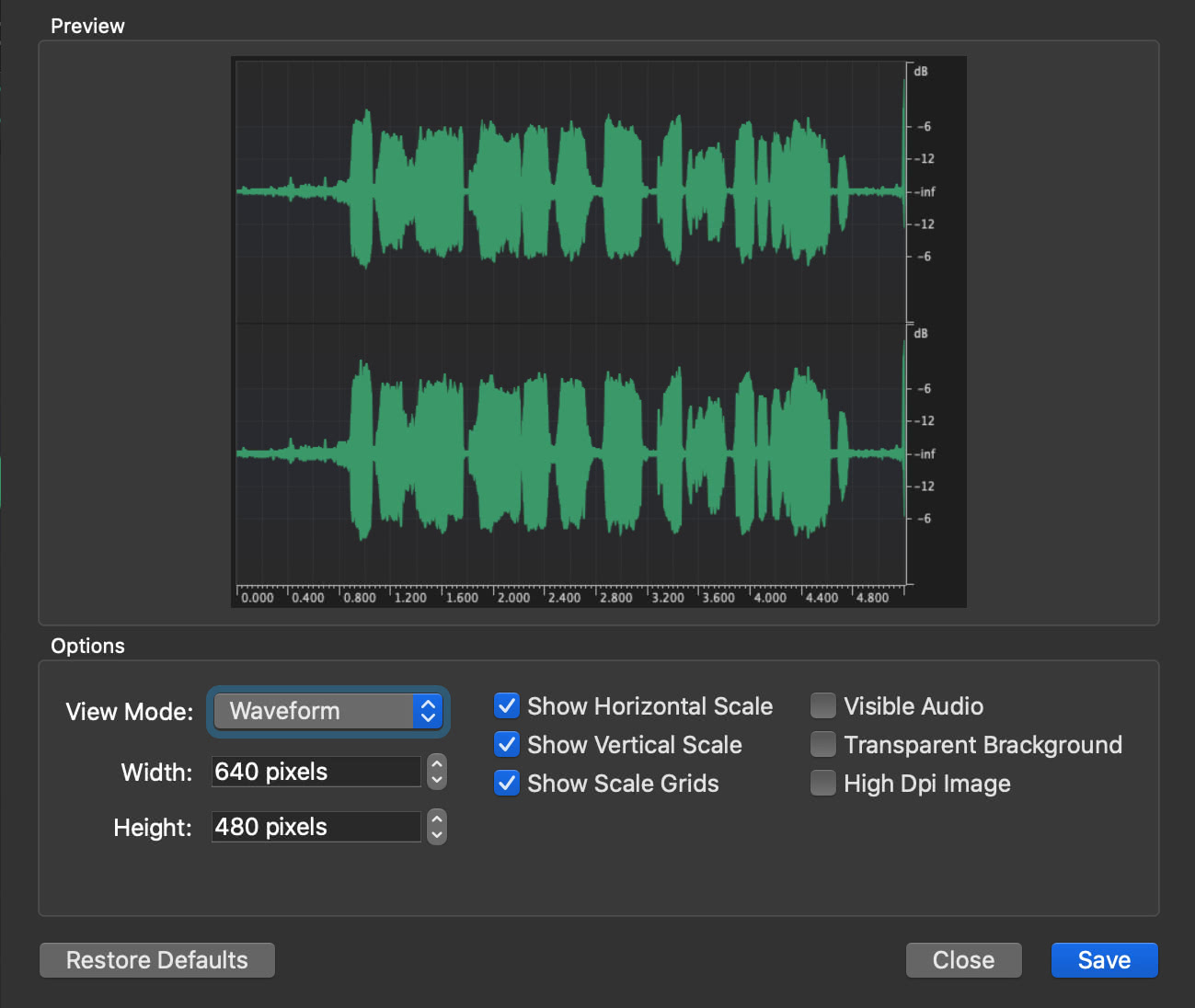 Audio screenshot settings
Audio screenshot settings
What part of working on this project has been most rewarding?
We were always very happy with the various feedback we received. Be them in the form of a thank you email, a like and share on our social networks, and donations received by PayPal.
How can your customers and fans help you?
We have a collaborative page on GitHub (https://github.com/ocenaudio/ocenaudio-translations) where users can contribute to the translation of Ocenaudio. You can also contact us through the official website for reporting bugs, problems, and suggestions for features.
Quick Tips
There are some really useful features in this editor that may not be obvious at first, I’ll cover a few here.
Conclusion
This editor is a generous contribution to the audio community from the Ocenaudio team in Brazil. It has more depth to it than the clean interface might suggest at first glance and the design shows an attention to detail that you start to appreciate after using it for a while. You can download it for free at the Ocenaudio site and check it out yourself.
Links
If you have suggestions or topics you want covered please contact me. 🙂

